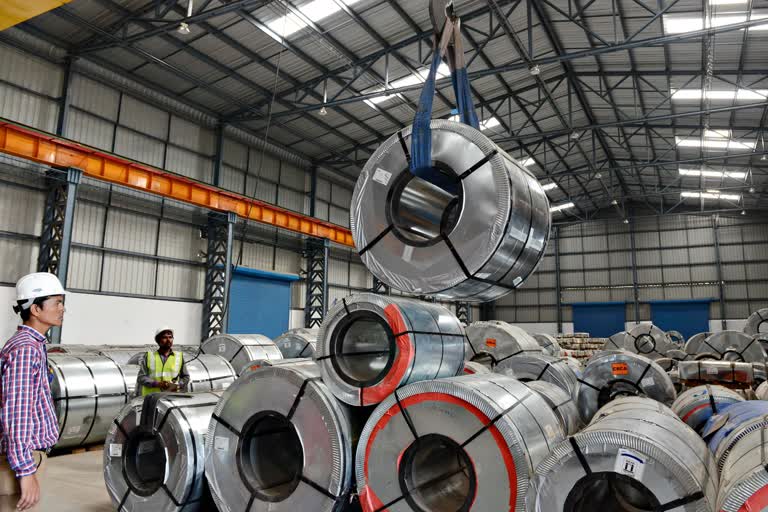New Delhi: The government on Wednesday said reducing the impact of carbon emissions is "one of the greatest challenges" for the steel industry, and called for collaboration among stakeholders to address the issue.
Speaking at a webinar 'By-Product Management for Indian Steel Industry' organised by industry body FICCI, Steel Additional Secretary Rasika Chaube said it is important to adopt technologies that can capture carbon from CO2 (carbon dioxide) and prevent it from entering the atmosphere.
"I must mention that reducing the impact of carbon is one of the greatest challenges which is being faced by our industry. For the steel industry like ours where there is a dominance of blast furnaces, the only way to substantially reduce associated CO2 emissions is to transit towards carbon capture and storage (CCS) and carbon capture and utilisation (CCU)," she said.
In India, steel players such as Tata Steel, JSW Steel, Jindal Steel and Power Ltd, AMNS India and state-owned entities Steel Authority of India Ltd and Rashtriya Ispat Nigam Ltd use the blast furnace route to make steel.
Chaube said there is also a need to utilise by-products generated from steel making in the country.
"We (only) concentrate on the main product (steel) and many a times tend to forget the by-products and the waste that is generated and that needs to be taken care of. We need to have a reliable collaboration...which will help us reduce GHG (greenhouse gases) emissions that cause global warming," she said.
Slag, fly ash, CO2, sludge and dust carrying zinc are the main by-products and waste generated while producing steel through different steel making routes in India, according to the Steel Research & Technology Mission of India (SRTMI), a collaborative research platform formed jointly by the steel ministry and domestic steel players.
SRTMI's main objective is to facilitate research and development in iron and steel by strengthening association among industry, academia and research bodies.
In the webinar attended by participants from India and abroad, Chaube said India has become the world's second-largest steel maker contributing 6 per cent to the overall global steel output, and producing steel in large quantities also leads to generation of by-products proportionately.
Read more: NBFCs seek continued liquidity support in upcoming Budget
SRTMI Director Mukesh Kumar said about 2.5-2.85 tonnes of CO2 is produced while making a tonne of steel through blast furnace and basic oxygen furnace routes. Contrary to Indian producers, steel players abroad have also been able to bring down their CO2 levels to below 2 tonne per tonne of steel.
Kumar, who has been associated with the steel and mining industry for over 25 years, said that through this route, around 500-600 kg of slag is generated on production of every tonne of steel.
He said DRI (directly reduce iron) and induction furnace routes, about 200 kg slag is produced on the one tonne production of steel, while the amount of CO2 generated ranges between 2.6-2.85 tonne.
When steel is produced using the electric arc furnace route, slag production varies between 150 kg and 200 kg per tonne of steel, and carbon emission stands at 0.4 tonne, he said.
Chaube said the by-products that are generated during steel making are valuable products and must be used as a substitute to natural resources. This will not only help save energy consumption but also promote environmental sustainability and circular economy.
Suggesting a few areas where the by-products can be utilised, Kumar said that while slag can be fully used in cement and construction industries and in agriculture as fertiliser, the gases emitted can be used in power plants as fuel and also converted into biofuel.
The fly ash can be used in making bricks mixing 3-4 per cent cement and lime grits. Zinc can be extracted from the dust and taken in use, he said.
(PTI)



